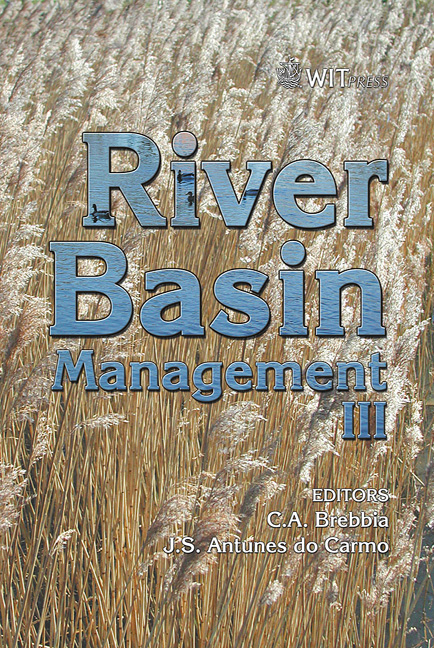A GIS-based Approach To River Network Floodplain Delineation
Price
Free (open access)
Transaction
Volume
83
Pages
8
Published
2005
Size
1,461 kb
Paper DOI
10.2495/RM050491
Copyright
WIT Press
Author(s)
J. Yang, R. D. Townsend & B. Daneshfar
Abstract
The main goal of this continuing study is to develop a GIS-based procedure for delineating and displaying in 3-D the desired floodplain zones of river networks using data generated by the HEC-2 numerical model. The methodology is applied to the Bear Brook sub-watershed of the South Nation river system, located near Ottawa, Ontario, Canada. First, HEC-2 data are imported and reproduced in HEC-RAS. Next, HEC-RAS in-stream data are geo-referenced and mapped in GIS domain and then integrated with digital elevation model (DEM) over-bank data to build a terrain triangular irregular network (TIN) model. This integrated terrain model is then overlaid with water surface TIN for selected storm events for 3-D floodplain visualization. Data query models, relating to ‘local flood depth’ and ‘channel section’ information, are also constructed. Keywords: floodplain delineation, river network, GIS-based approach, HEC-2 model, HEC-RAS model, geographic referencing, 3-D visualization, integrated digital terrain model, data query model. 1 Introduction For over 40 years, various computer models have assisted in river floodplain delineation exercises. A widely applied model in this category is the Hydrologic Engineering Center’s HEC-2 model, USACE [1]. An improved ‘Windows’ version of this model: HEC-RAS (for River Analysis System) was released in 1995. The RAS version, which includes a graphical user interface, a hydraulic analysis component, data management and storage capabilities, graphics tools and reporting utilities, offers significant improvements over the original DOS-©
Keywords
floodplain delineation, river network, GIS-based approach, HEC-2 model, HEC-RAS model, geographic referencing, 3-D visualization, integrated digital terrain model, data query model.





